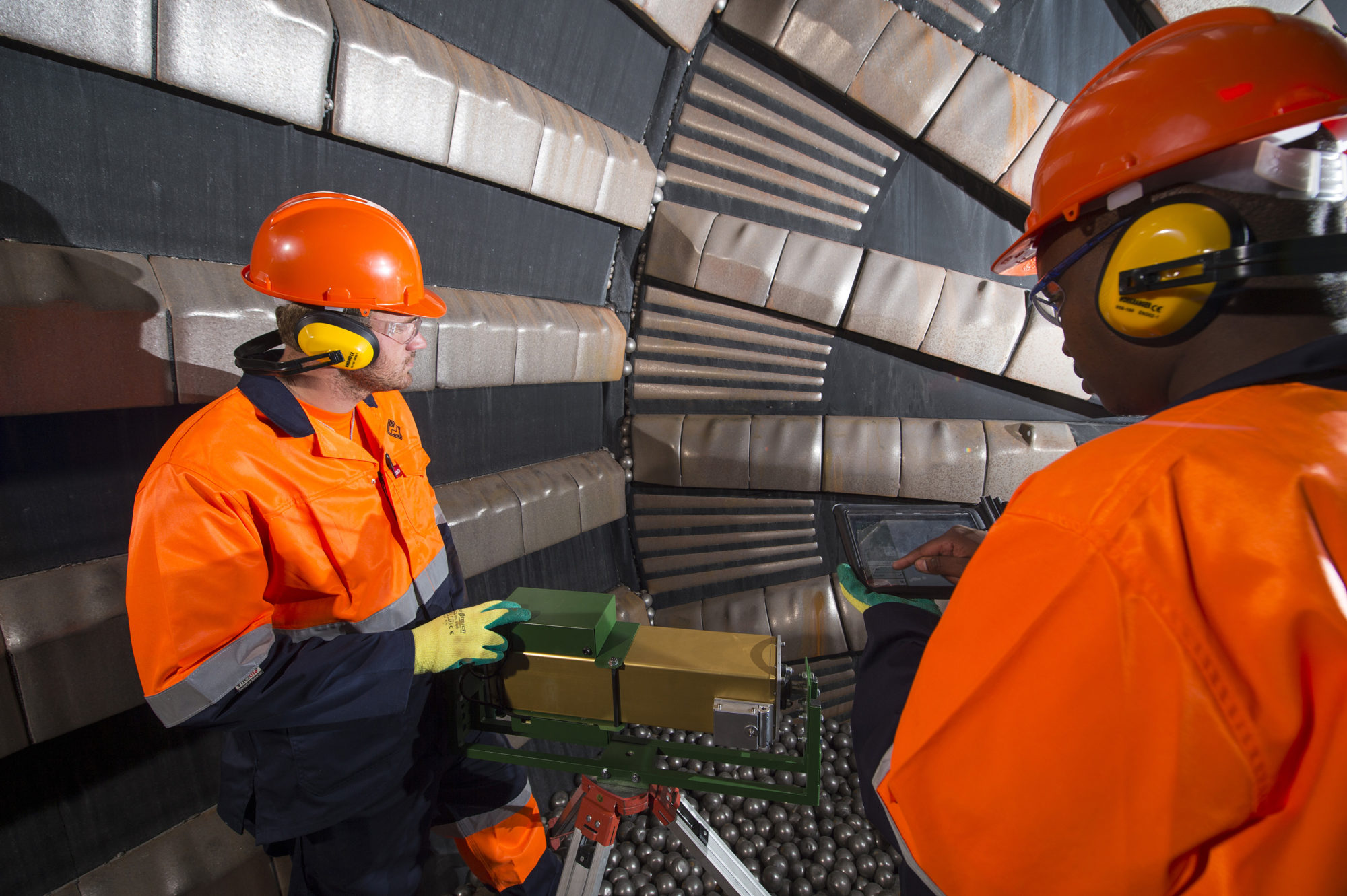The correct time to change mill liners is when the efficiency of the mill drops and not when you think the lining is completely worn. Spike Taylor, Managing Director of Multotec Rubber, explains that the efficiency of the mill liner relates directly to recovery efficiency of the downstream equipment, and that plant operators need to adopt a far more proactive approach in this regard.
“A further ramification of waiting too long to change out the mill lining is that the fresh feed rate will decrease significantly because of the higher recirculating load, and this will have an obvious impact on production throughput in a plant,” Taylor says.
One of the major costs associated with operating a minerals processing plant is the cost of power or kW.hr/t, and this is significant because when the efficiency of the closed circuit mill is reduced it means that the material is essentially being treated more than once. This is a major additional cost factor, but often one that is not apparent.
Sam Hearn, Global Sales and Business Development Manager at Multotec Rubber says that often when speaking to plant operators, a hurdle that needs to be jumped is the misconception that the mill liner is an expensive purchase.
“Once we have engaged with the plant engineers and drawn to their attention that the liners only cost between 10 to 20% of the operating cost of a mill, and that the cost of power is far greater we have their attention,” Hearn says. Power is a monthly expenditure for a plant and in most cases is not directly allocated to the mill’s operating costs, yet power accounts for about 60% of the total operating cost for that mill.
Hearn says that if it is accepted that the power cost is 60% and the liner cost is 10%, then the balance of the mill’s operating costs can be attributed to the grinding media. “This is an area which can be adversely affected by liner profile and charge trajectory so Multotec takes special care to ensure the design is correct,” he explains.
Worn liners allow more slippage of the charge and this results in an acceleration of the wear rate which can lead to the predicted life not being achieved with sudden replacement requirements so more frequent liner measurements need to be taken as the liners near the end of their life.
Multotec Rubber has a sound reputation with its customers where the use of its MultoScan system has been implemented. Using the MultoScan measurements and the SCADA data that the company receives from customers, it is possible to generate an accurate report on the performance of the mill. This enables Multotec’s technical team to engage with the mill operator directly in terms of mill performance and costs.
“In many instances, it is possible to make recommendations based on this data motivating for an earlier mill liner change out as this can dramatically reduce operating costs and increase overall plant efficiency,” Hearn explains.
What is most important in this scenario is Multotec’s ability to use the data generated to accurately determine the actual payback period for the new lining. As an example, Hearn talks about one customer where Multotec found that by replacing the mill lining ahead of the plant’s replacement schedule it was possible to increase the efficiency of the entire plant with a payback period of only days. In this instance, using available data it was easy to distinguish that even though the lining appeared to have an acceptable remaining life, the efficiency of the milling circuit was well below plant design requirements.
“Achieving these increased efficiencies is what is attracting our customers as they can clearly see the advantage in replacing the mill linings at the most cost advantageous stage. And being able to assist our customer using accurate data to make informed decision such as this is a major differentiator for us and them,” Taylor concludes.











